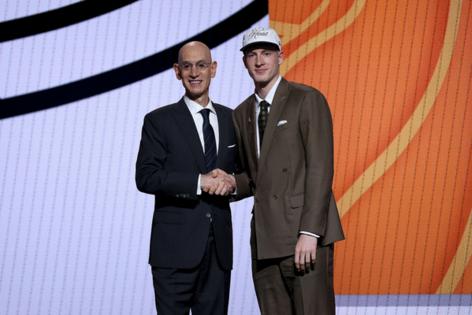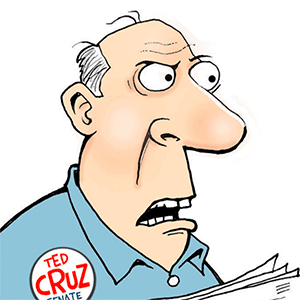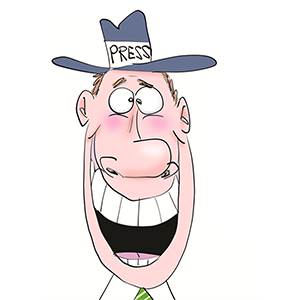Ira Winderman: NBA Finals showed depth matters; now can Heat make their developing depth matter?
Published in Basketball
MIAMI — Because they are the Heat, it seemingly is always about the next big thing, as has been the case during these three decades of Pat Riley rule.
Sometimes it happens: Shaquille O’Neal, LeBron James, Chris Bosh, Goran Dragic, Jimmy Butler, Kyle Lowry (somewhat lamentably), Terry Rozier (very lamentably).
Sometimes it doesn’t: Kevin Durant, Kevin Durant, Kevin Durant, Kevin Durant.
But deeper inside the Heat’s conclave, where scouts move to unearth the unearthed, where developmental coaches work to develop the undeveloped, there also has been an abiding respect for what is required to round out the roster, to establish a needed support system.
No sooner was the first round completed on Thursday night, after the Heat landed Illinois guard Kasparas Jakucionis, then Adam Simon, one of the deans of the Heat’s scouting staff, noted, “Depth is important.”
Three nights earlier, in the final game of the season, the champion Oklahoma City Thunder and the runners-up Indiana Pacers showed as much in Game 7 of the NBA Finals.
Because beyond the likes of Shai Gilgeous-Alexander, Jalen Williams, Chet Holmgren, Tyrese Haliburton, Pascal Siakam and Myles Turner, the Thunder and the Pacers showed the value of the likes of Alex Caruso, Lu Dort, Isaiah Hartenstein, Cason Wallace, Aaron Wiggins, Aaron Nesmith, Andrew Nembhard, Obi Toppin, TJ McConnell and Bennedict Mathurin.
“Obviously,” Simon continued, “we’ve seen teams that were in the Finals that played a lot of depth, played 10 guys, 11 guys. A lot of those players came through their drafts.”
Some, not all.
But with both teams it was two weeks of ball-moving, consensus basketball, a testament to the value of volume.
And, in this new age of luxury-tax aprons and draconian penalties on excessive payrolls, a shift to the reality of complementary components now being vital in the void of rosters with third or fourth All-NBA contributors.
Which brings it back to Simon and his candor that if Jakucionis isn’t necessarily going to be a star, he projects, at worst, as a likely rotation contributor going forward.
For the Heat, it certainly is heartening to have exited the draft with the belief of having added a rotation component, confidence not always in place with a No. 20 selection (as evidenced by recent No. 20s such as Jaylon Tyson, Malaki Branham, Bruno Caboclo).
But as the search for a star to place alongside Bam Adebayo and Tyler Herro remains ongoing, questions remain about the depth that Simon spoke of building.
Among the issues for the Heat last season was a roster largely constructed of what could be considered eighth or ninth men. Now the question is whether they at least can graduate to sixth or seventh men, to put the Heat in a position of strong support for what is in place or what might arrive.
So, on your marks, get set ... develop (if possible).
Kasparas Jakucionis
The latest Heat move for raw potential, Jakucionis arrives one month removed from his 19th birthday. The work ethic already has been chronicled. There would seem little doubt the more can be mined. The question is how soon?
— What he is now: Likely a backup point guard.
— What the Heat need him to become: A starting point guard.
Kel’el Ware
Two months removed from his 21st birthday, Ware acknowledged this past week that he still is growing into his body. That will come. What needs to be seen if a defensive fluidity can be developed, his stiff approach exposed in the playoffs.
— What he is now: A nominal starting center for a roster lacking an option otherwise.
— What the Heat need him to become: A defensive stopper with on-ball skill on that side and an offensive weapon with more fluidity to his game.
Nikola Jovic
Less than one month removed from his 22nd birthday, Jovic stands as a 6-foot-10 unicorn with perimeter skills, but perimeter skills still in need of significant refining.
— What he is now: A sixth man who needs to find a way to stay healthy.
— What the Heat need him to become: A reliable 3-point shooter who can accept that his height will often lead him needing to defend in a power role.
Jaime Jaquez Jr.
At 24, the question is whether there will be third-year growth after a significant sophomore slump. That outside shot simply has to fall to create any opposing defensive attention.
— What he is now: A huge question mark after last season’s regression.
— What the Heat need him to become: A closer version of his All-Rookie self, which, at worst would leave the Heat with a quality sixth man and at best, an option to start at small forward.
Pelle Larsson
At 24, a mature prospect lacking needed playing-time polish on the NBA level. A more reliable 3-point shot and the reserve world could be his oyster.
— What he is now: A shot away from something special.
— What the Heat need him to become: Reliable enough on the offensive end to set his energy free in the rotation.
Keshad Johnson
At 24, Johnson was valued enough to have his 2025-26 salary guaranteed this past week. The possibilities are there of a 3-and-D presence at power forward.
— What he is now: Untested.
— What the Heat need him to become: P.J. Tucker 2.0.
Dru Smith
At 27, sort of at the last-chance-saloon stage of development. Still, when he suffered his Achilles tear last December he was playing at a level similar to what Davion Mitchell delivered at the end of this past season.
— What is he now: Recovering from yet another injury setback.
— What the Heat need him to become: Healthy.
©2025 South Florida Sun-Sentinel. Visit sun-sentinel.com. Distributed by Tribune Content Agency, LLC.







Comments